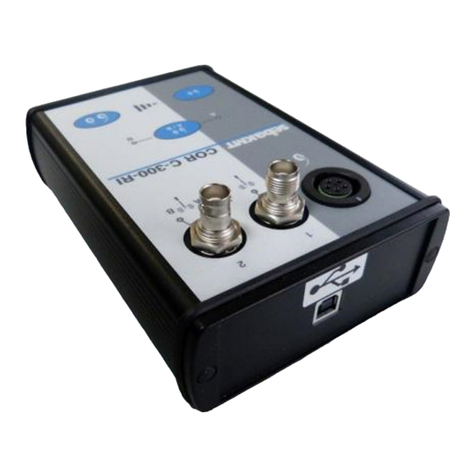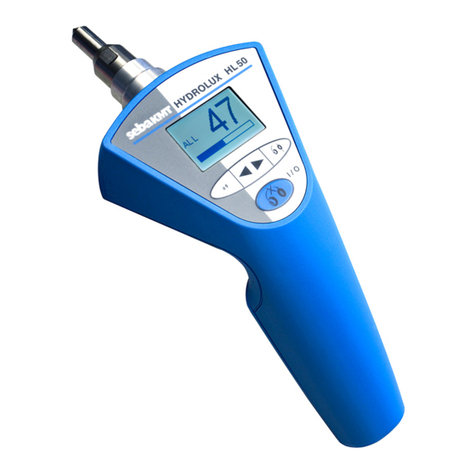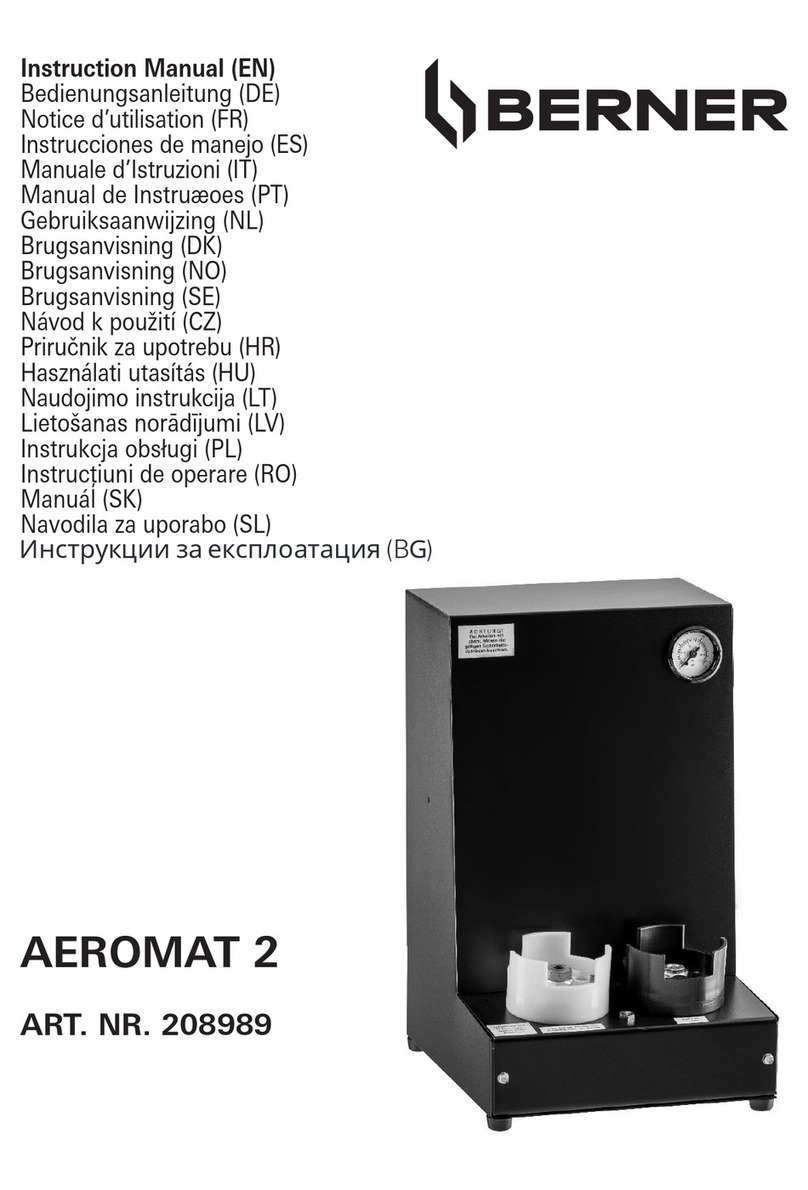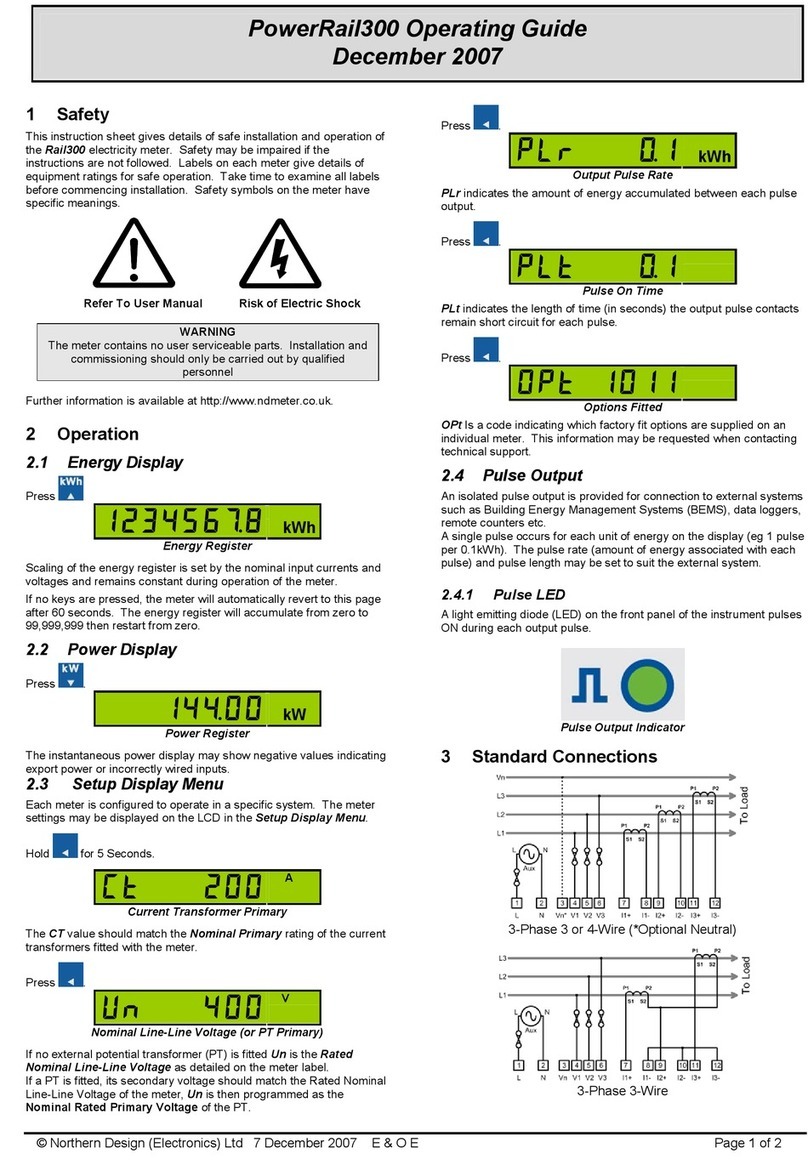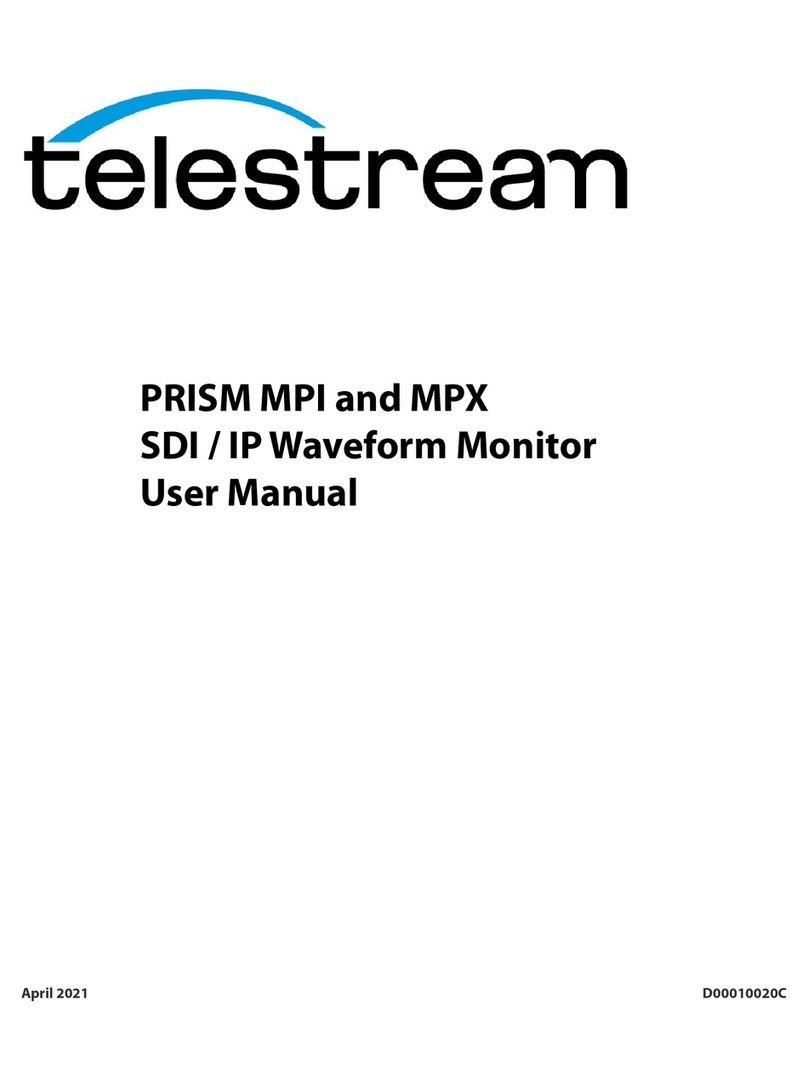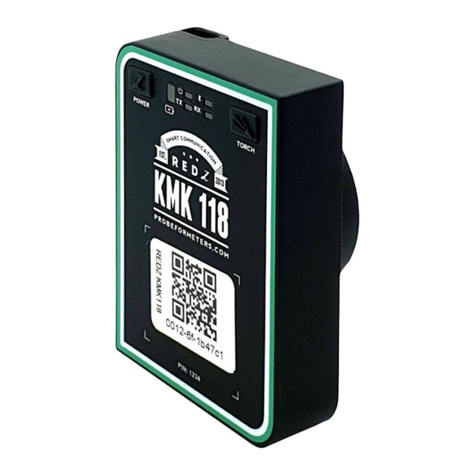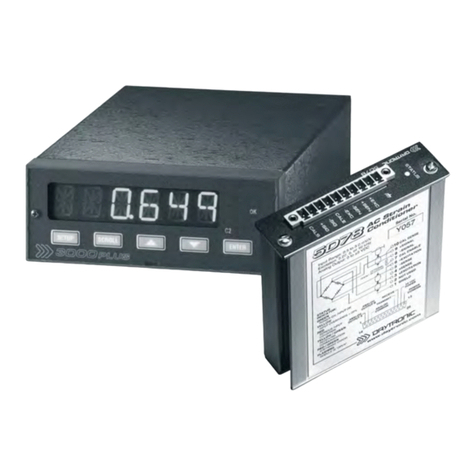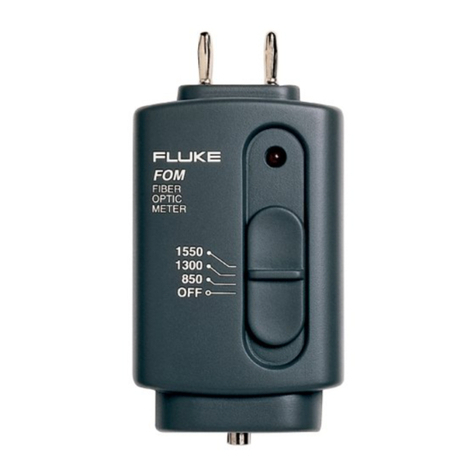sebaKMT Easyflex Com User manual

Instruction Manual
Kommunikationsnetze
Communication
Networks
Elektrizitätsnetze
Pow
er
Networks
Rohrleitungsnetze
Water
Networks
Leitungsortung
Line
Location
- Date of release:
2003/34
Mess- und Ortungstechnik
Measuring and Locating Techniques
Easyflex Com

2 MAN_Easyflex_com_eng_01.doc

MAN_Easyflex_com_eng_01.doc 3
Easyflex Com
compact and light-weight
Time-Domain Reflectometer

4 MAN_Easyflex_com_eng_01.doc

MAN_Easyflex_com_eng_01.doc 5
TABLE OF CONTENTS
1 GENERAL ..................................................................................... 9
1.1 Advice from Hagenuk KMT GmbH.........................................................9
1.2 Terms and conditions of warranty........................................................10
1.3 Safety Instructions................................................................................11
1.4 Indications used in the description.......................................................12
2 TECHNICAL DESCRIPTION....................................................... 13
2.1 General Description..............................................................................13
2.2 Specifications........................................................................................15
2.3 Items Supplied and Optional Extras.....................................................19
3 OPERATION................................................................................ 21
3.1 Measuring Terminals............................................................................21
3.2 Display..................................................................................................22
3.3 Functions of Keys and Rotary Encoder................................................24
3.4 Getting Started (Insert / Replace Accumulator) ...................................27
3.5 Switching On and Off............................................................................27
3.6 Main Menu............................................................................................28
3.7 Compensation of Initial Reflection........................................................28
3.8 How to Locate a Fault...........................................................................29
3.8.1 Fields of Application ..........................................................................30
3.8.1.1 Faults Causing a Negative Reflection.....................................30
3.8.1.2 Faults Causing a Positive Reflection.......................................31
3.8.1.3 Further Fields of Application ...................................................32
3.8.2 Testing a Cable with Known Nominal Velocity of Propagation NVP or
with Known Pulse Propagation Velocity (v/2)..............................................33
3.8.3 How to Determine an Unknown Nominal Velocity of Propagation or
Pulse Propagation Velocity.........................................................................35
3.8.4 Simplification of Fault Location Using Comparative Tests................35
3.8.5 Averaging...........................................................................................36
3.8.6 Mode NEXT.......................................................................................37
3.8.7 How to Use the Marker......................................................................38
3.8.8 Change of Pulse Width......................................................................39
3.8.9 Self Test.............................................................................................40
3.9 Memory Function..................................................................................41
3.10 Serial Interface ...................................................................................43
4 NIMH ACCUMULATOR CHARGER ........................................... 44
4.1 Technical Description...........................................................................44
4.1.1 Specification ......................................................................................44
4.1.2 Start-Up .............................................................................................45

6 MAN_Easyflex_com_eng_01.doc
4.1.3 General Instructions on How to Handle a NiMH Accumulator ..........46
4.2 Operation..............................................................................................47
4.2.1 Safety Precautions.............................................................................47
4.2.2 Modes of Operation ...........................................................................47
4.2.3 Practical Hints....................................................................................48
4.3 Troubleshooting....................................................................................49
5 CARE UND MAINTENANCE.......................................................49
6 APPENDIX...................................................................................50
6.1 List of Abbreviations Used....................................................................50
6.2 Conversion: NVP ⇔v/2.........................................................................51
6.3 Table: NVP and v/2for Common Types of Cables................................52
6.4 Glossary................................................................................................54

MAN_Easyflex_com_eng_01.doc 7
EC - Declaration of Conformity
CE Mark
We, the company Hagenuk KMT
Kabelmesstechnik GmbH
Roederaue
D-01471 Radeburg
Germany
declare under sole responsibility that our product
Easyflex Com
is in conformity with the directive of the Council of European Communities for
the Harmonization of the Laws of Member States on Electromagnetic
Compatibility (EMC Directive 89/336/EEC) and Low Voltage (Directive
73/23/EEC).
This EC Declaration of Conformity is the result of a verification test performed
by the department of Quality Assurance of Hagenuk KMT Kabelmesstechnik
GmbH.
Conformance with the directive on Electromagnetic Compatibility was verified
in accordance with the following standards:
EN 50081 Interference Emission, EN 50082 Interference Immunity
EN 55011 Product Standard, EN 61000-4-2 Electrostatic Discharge, and
EN 61000-4-4 Fast Interfering Electrical Transients
Conformance with the directive on Low Voltage was verified in accordance
with the following standards:
EN 61010-1 Safety Regulations for Electrical Measuring, Control, Regulating,
and Laboratory Instruments and EN 60529 Enclosure Protection
Radeburg, 6th of March 2003
Dr. Iann
Managing Director

8 MAN_Easyflex_com_eng_01.doc

MAN_Easyflex_com_eng_01.doc 9
1 GENERAL
1.1 Advice from sebaKMT
This user manual has been conceived as a reference work. It is intended to
help you answer questions and solve problems as quickly as possible.
Should you have any problems, please first read the user manual with
care.
To do this, make use of the index and read the relevant section carefully.
Also check all equipment connections.
If questions still remain unanswered, please contact the following
addresses:
Hagenuk KMT Seba Dynatronic
Kabelmeßtechnik GmbH Meß- und Ortungstechnik GmbH
Roederaue 41 Dr.- Herbert- Iann- Str.6
D - 01471 Radeburg / Dresden D - 96148 Baunach
TELEFON: +49 / 35208 / 84 - 0 TELEFON: +49 / 9544 / 68 - 0
TELEFAX: +49 / 35208 / 84 249 TELEFAX: +49 / 9544 / 22 73
SERVICE-HOTLINE :
TELEFON: +49 / 35208 / 84 211 TELEFON: +49 / 9544 / 68 - 0
TELEFAX : +49 / 35208 / 84 250 TELEFAX: +49 / 9544 / 22 73
internet: http://www.sebakmt.com
© Hagenuk KMT GmbH
All rights reserved. No part of this manual may be photocopied or
reproduced in any other form without the prior written consent of Hagenuk
KMT. We reserve the right to alter the contents of this manual without prior
notice. Hagenuk KMT shall not be liable for technical or typographical
errors or omissions in this manual. Nor shall Hagenuk KMT accept liability
for damage or injury which is directly or indirectly attributable to the supply,
performance or use of this material.

10 MAN_Easyflex_com_eng_01.doc
1.2 Terms and conditions of warranty
Hagenuk KMT Kabelmesstechnik GmbH will accept a warranty claim
brought forward by a customer for a product sold by Hagenuk KMT under
the terms stated below and the General Terms of Supply of Products and
Services of the Electrotechnical Industries, date of issue May 1993.
Hagenuk KMT guarantees that Hagenuk KMT products are at the time of
their delivery free from defects in workmanship or materials which
substantially reduce their value or serviceableness. This warranty does not
cover faults in supplied software. During the warranty term Hagenuk KMT
will repair defective parts or replace them with new or as-new parts (with
the same operability and service life as new parts) at its option.
Additional warranty claims, in particular claims arising from consequential
loss, cannot be asserted. All parts and products replaced under the terms
of this warranty become the property of Hagenuk KMT.
Warranty claims on Hagenuk KMT lapse 12 months after the delivery date.
Parts supplied by Hagenuk KMT within the framework of the warranty are
also covered by this warranty for the remaining warranty term, but for no
less than 90 days.
Warranty measures are undertaken exclusively through Hagenuk KMT or a
special service shop which is authorized by Hagenuk KMT.
Claims under the terms of this warranty are subject to the buyer notifying
Hagenuk KMT of defects without delay and no later than within 10 days of
the delivery date in the case of perceptible defects.
This warranty does not cover defects or damage caused by the products
being exposed to conditions which are not in accordance with the
specifications, being stored, transported or used incorrectly, or being
serviced or installed by agencies not approved by Hagenuk KMT. The
warranty does not cover damage owing to natural wear and tear, force
majeure or connection to external parts.
Hagenuk KMT is only liable for claims for damages arising from the
violation of claims for repair or replacement in the event of gross
negligence or intent. Any liability for ordinary negligence is ruled out.

MAN_Easyflex_com_eng_01.doc 11
1.3 Safety Instructions
All persons involved in the installation, operation, maintenance and repair
of the Easyflex Com must have read this manual carefully.
The Easyflex Com and its supplementary equipment are in accordance
with the current state of safety technology at the time of delivery. Owing to
the work processes involved, however, there may be parts of the unit and
its peripherals which cannot be given optimum protection without an
unreasonable reduction in function and usability. Good personal safety
practice is therefore indispensable in terms of the protection of staff and the
unit.
Therefore, please comply with the following safety instructions!
GENERAL INSTRUCTIONS
Work on the Easyflex Com and its peripherals must only be carried out by
trained and/or instructed staff. Other persons must be kept away.
This manual must be available for the supervisory, operating and
maintenance staff to refer to.
Improper use may endanger life and limb, the Easyflex Com and
connected equipment, as well as the efficient functioning of the unit
(accident prevention regulations). The Easyflex Com may only be used for
the purpose for which it is intended by the manufacturer.
Always use the correct tools in perfect condition for all work.
Regular checks must be made to ensure that the relevant safety
regulations are being complied with during operation and maintenance.
Never operate the Easyflex Com and its peripherals if they are not in a
technically perfect condition.
Only parts specified by Hagenuk KMT as accessories must be used for the
Easyflex Com and its peripherals, as the necessary safety will not
otherwise be guaranteed. No mode of working which detracts from the
safety of the Easyflex Com must be used.
Replace a accumulator only when the device is switched off and
disconnected.

12 MAN_Easyflex_com_eng_01.doc
The user is under an obligation to report any changes in the Easyflex Com
to the supervisor responsible without delay.
The operator is under an obligation to shut the Easyflex Com down
immediately in the event of a malfunction which detracts from the safety of
staff. The Easyflex Com must only be put back into operation once the
malfunction has been rectified.
ELECTROTECHNICAL INSTRUCTIONS
Connect the Easyflex Com and all its accessories according to instructions
and regulations. Make sure the relevant regulations such as EN, DIN, VDE
or national standards, respectively, are observed.
Repair and maintenance work must only be carried out when the unit is
switched off (dead) and then only by a skilled electrician in accordance with
current accident prevention regulations. A skilled electrician in the sense of
the accident prevention regulations is a person who can assess the work
assigned to him/her and recognise possible dangers on the basis of his/her
technical training, knowledge and experience, and of his/her knowledge of
the relevant regulations.
1.4 Indications used in the description
Important instructions concerning personal protection, work safety and
technical safety are indicated as follows:
CAUTION
Caution indicates work and operating procedures which
must be complied with in full to prevent the Easyflex Com
and/or its peripherals from being damaged or ruined.
NB
NB indicates special technical requirements to which the
user must pay particular attention when using the Easyflex
Com.
Equipment protected by double insulation or reinforced
insulation.

MAN_Easyflex_com_eng_01.doc 13
2 TECHNICAL DESCRIPTION
2.1 General Description
The
Easyflex Com
is a compact, light-weight and easy-to-handle digital
time-domain reflectometer for locating faults in balanced
telecommunication and control lines. It can be handled easily and so
enables even an inexperienced user to locate faults precisely and fast.
Experts in testing will find a variety of additional functions at their hands. By
its design the
Easyflex Com
is a robust device suitable for field application.
The
Easyflex Com
is double-insulated and equipped with safety terminals
to protect the user.
The
Easyflex Com
is similar to radar in that it employs the pulse reflection
technique. Suitable test pulses are transmitted into the cable to be tested.
The pulses travel along the cable at a propagation velocity that is
dependent on the connected test object. In every place where the electric
characteristics of the cable have changed, part of the transmission pulse is
reflected and caused to travel back to the
Easyflex Com
where it will be
displayed on the screen with a time delay corresponding to its propagation
time.
A change in the electric characteristics of a cable may be caused either by
a possible fault or by local circumstances such as junction boxes,
connectors, or the end of the cable. The time delay between the incoming
reflection and the moment of pulse transmission is the propagation time to
the point of fault and back. The distance from a place of interest can be
calculated by taking into account the specific pulse propagation velocity of
the cable under test. Shape and size of the reflected signal allow
conclusion to be drawn on the nature and size of the fault.
The propagation time of the test pulse which is dependent mainly on the
material of cable insulating material is taken into account by specifying a
signal propagation velocity.

14 MAN_Easyflex_com_eng_01.doc
For measuring the distance to the fault, a movable cursor or a combination
of marker and cursor are used. Distance is display in m, ft, or µs as
selected by the user. In order for the distance to be indicated in m or ft, the
pulse propagation velocity of the cable under test has to be entered before
the test is carried out.
The greatest advantage of the pulse reflection method is its ability not only
to find out that there is a fault but also to find its location and type.
The
Easyflex Com
allows two cables under test to be connected to L1 and
L2 at the same time and to show two reflectograms simultaneously. This
can be done using currently taken reflectograms or test results stored in
memory.
The most important modes of testing are:
•Reflection measurement Pair (physical circuit) versus Built-in balancing
network (dummy line)
•Difference measurement of two pairs
•Location of crosstalk (NEXT) Pair versus Pair (k1 measurement)
There are two display modes the user can choose between. When you
wish to get a revealing overview of the cable under test and, at the same
time, have a closer look at a cable section, you can choose the display
mode which divides the screen of the
Easyflex Com
into two windows. The
upper window shows the full distance range with a movable window
marking a section the content of which is displayed zoomed in the lower
window. There is yet another display mode with a full-screen display of the
selected cable section.
Current device settings are display by the LCD. When a stored
reflectogram is uploaded as trace 1, all relevant settings such as gain and
NVP are also taken over from memory thus allowing the current test result
to be easily compared with a reflectogram taken earlier.
The
Easyflex Com
is powered from a NiMH rechargeable accumulator
fitting in a accumulator compartment in the bottom of the unit. The
instrument has a Power-Down mode. Moreover, the unit can also be
powered from an external source of power.

MAN_Easyflex_com_eng_01.doc 15
2.2 Specifications
Modes of testing:
L1:
Reflection test of cable connected to
socket L1 versus built-in balancing
network
L2: Reflection test of cable connected to
socket L2 versus built-in balancing
network
Alt: A reflection test is carried out alternately on
cables connected to sockets L1 / L2
Diff: Measurement of difference between
cables connected to sockets L1 and L2
NEXT: Location of crosstalk between cables
connected to sockets L1 and L2
Pairs to be connected: 2
Modes of operation:
Single
Cont
Average
Single test
Continuous testing
Averaging of up to 256 test results
Measuring ranges at
v/2= 100 m/µs
50, 100, 200, 400, 1000, 2000 m
4, 15 km
Zoom factors (X direction) 1, 2, 5, 10 (depending on range of
measurement)

16 MAN_Easyflex_com_eng_01.doc
Maximum resolution 1.25 cmfor range 50 m at 50 m/µs
2.5 cm for range 50 m at 100 m/µs
2.5 cm for range 100 m
5 cm for range 200 m
10 cm for range 400 m
25 cm for range 1000 m
50 cm for range 2000 m
1 m for range 4000 m
2.5 m for range 7500 m
5 m for range 15 km
Accuracy ± 0.1% of range of measurement ±1
cursor step
Gain 0 … 80 dB in steps of 1 dB
Dynamic range 90 dB
Distance reading m, ft, or µs
Setting range of signal
propagation velocity
NVP
v/2
0.200 … 0.999 in steps of 0.001
30.0 … 149.9 m/µs or
98.4 … 491.8 ft/µs
Pulse amplitude 5 ns 2 V±25 % at 120 Ω
10 ns 2 V±25 % at 120 Ω
20 ns 2 V±25 % at 120 Ω
50 ns 3,5 V−25 % at 120 Ω
200 ns 5,0 V−25 % at 120 Ω
750 ns 6,0 V−25 % at 120 Ω

MAN_Easyflex_com_eng_01.doc 17
Pulse width Pulse width is linked to range of
measurement:
5 ns for range 50 m (100 m/µs)
5 ns for range 100 m
10 ns for range 200 m
20 ns for range 400 m
50 ns for range 1 km
200 ns for range 2 km
200 ns for range 4 km
750 ns for range 7,5 km
750 ns for range 15 km
Electrical strength of test
inputs 250 V AC/DC 50/60 Hz
CAT II (overvoltage category)
Memory locations 16
Measuring rate up to 11 reflectograms per second
(averaging mode, short range)
Display rate up to 4 screen images per second
Display 256 x 128 pixels, back-lighted
Interface RS 232 for PC / printer
Power supply Replaceable NiMH rechargeable
accumulator
(7,2 V/1,7 Ah)
or Plug-in mains unit (optional extra)
Mean operating time with
one accumulator charge ca. 8 hours
Languages German, English,
other languages as optional extras on
request

18 MAN_Easyflex_com_eng_01.doc
Environmental conditions
Operating temperature
-10 °C … +50 °C
Storage temperature -20 °C … +60 °C (without accum ulator)
Storage temperature
(accumulator) -20 °C … +50 °C
Dimensions, mm 176 x 260 x 70 (L x W x H)
186 x 260 x 70 incl. measuring terminals
Weight approx. 1.5 kg
Interelement protection
class II with accumulator compartment closed
and protective cap on serial interface
terminal
Enclosure protection IP54
Subject to changes and alterations without further notice!

MAN_Easyflex_com_eng_01.doc 19
2.3 Items Supplied and Optional Extras
Items supplied:
Description
Easyflex Com, consisting of
Easyflex Com
(G,E, two languages on request)
- 2 pcs. set of test leads
- Case for Easyflex Com
- Accumulator 7,2 V / 1,7 Ah / NiMH
- Charge case
- Plug-in mains unit, for charger
case;
according to country:
EURO 230 V / 50 Hz
USA 120 V / 60 Hz
UK 230 V / 50 Hz
- Instruction manual, according to
country:
German
English
More languages on request

20 MAN_Easyflex_com_eng_01.doc
Optional Extras:
Description for use as
Rechargeable accumulator
7,2 V / 1,7 Ah / NiMH
(Energy DC17AA)
replaceable
accumulator
Winkis Com PC software for
evaluating and storing
reflectograms
Printer set means for the on-site
preparation of test
reports
Transportation case for printer set
Plug-in mains unit external source of
power
Adapter cable for charging the
accumulator from a
vehicle electric mains
using the charging
management of the
charger case
Coax adapter for testing coaxial
cables
Fault Converter for locating moisture-
induced faults
Calibration with manufacturer’s test
certificate
Subject to changes and alterations without notice!
Table of contents
Other sebaKMT Measuring Instrument manuals
Popular Measuring Instrument manuals by other brands

Mitsubishi Electric
Mitsubishi Electric ME96NSR Operator's manual
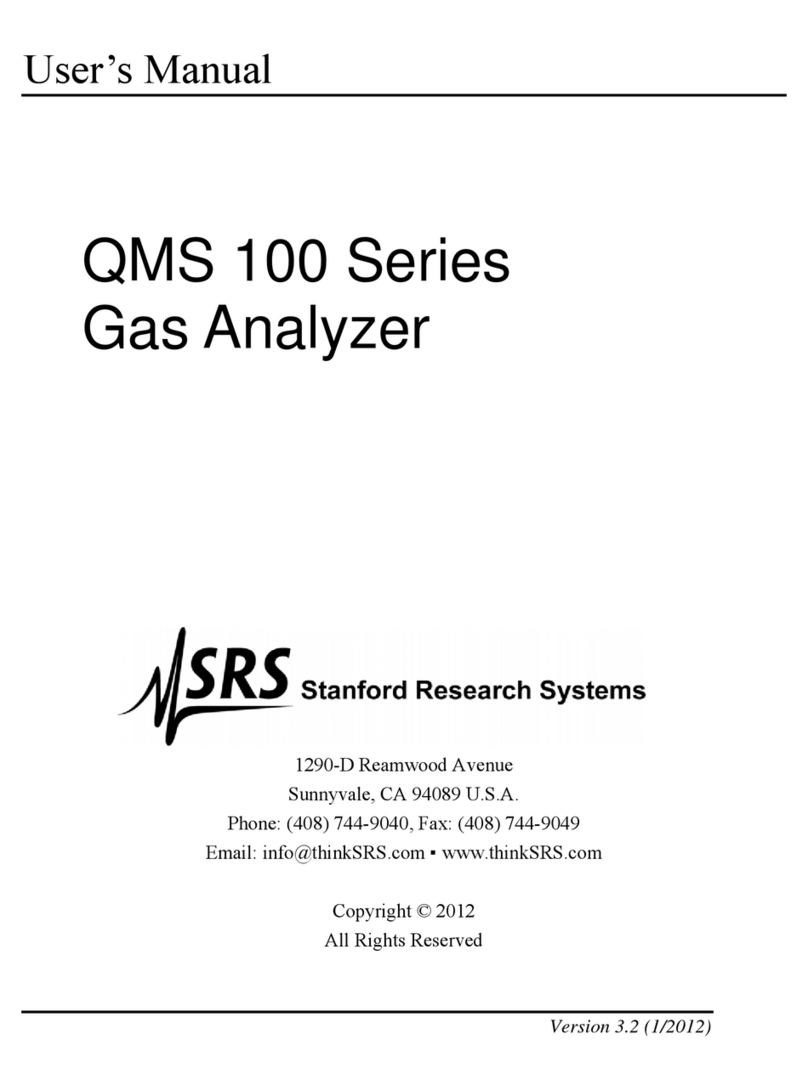
SRS Labs
SRS Labs QMS 100 Series user manual

Varian
Varian CP-4900 Micro-GC Firmware update manual

UE Systems
UE Systems Ultraprobe 15000 Touch instruction manual
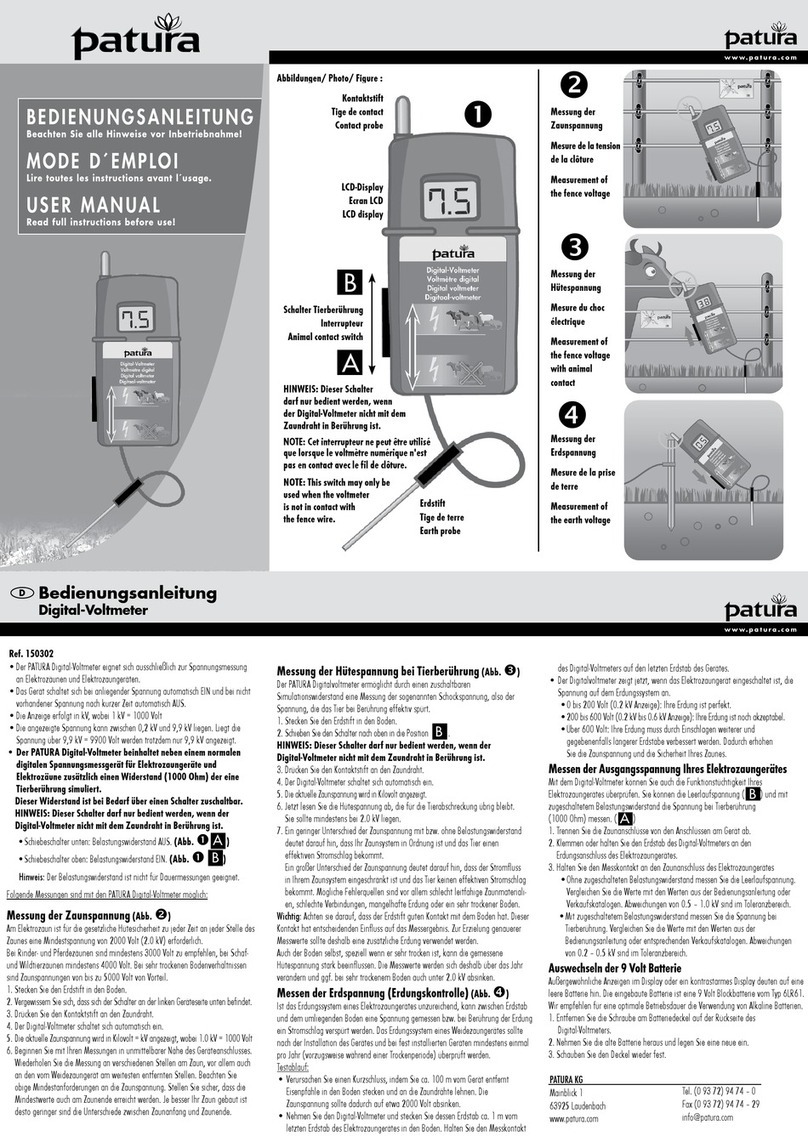
patura
patura 150302 user manual
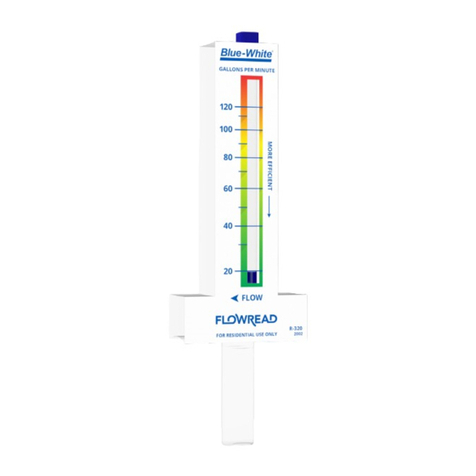
Blue-White
Blue-White FLOWREAD R-300 quick start guide


